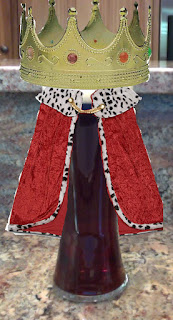In reality, we are. It just doesn't always look like it. Today's beer is an example of something good the 1% has given us. Weißbier. The literal translation is "white beer, " which refers to the fact that its color was substantially lighter than other beers made at the time (pilsner didn't exist yet). Before the advent of pale malt, this light color was achieved by using wheat in the grain bill. But this beer comes from the birthplace of the reinheitsgebot, which stipulated only water, barley and hops were allowed. How did it survive? The 1%! The royal family had a monopoly on wheat beer production at that time, so it weaseled itself into a nice little loophole granting it what basically amounted to a copyright on an entire style for a number of centuries.
 |
| Bavarian Fat Cat |
 |
| Weak head totally my fault. Usually I'm a pro, I swear! |
I had never had a dunkelweiss before, so the color really stood out to me. I smell the banana bread about which I have so often read and it is quite enjoyable. I'm generally not that in to wheat beers, but the addition of dark malts helps me be a fan. It gives the brew a slight caramely flavor, just enough to intrigue you into the next sip. The mouthfeel is pretty thin, letting the beer coat even the most obscure nooks and crannies before falling down your throat. I'm glad it comes in a half liter bottle, because I would hate to drink just twelve ounces of it.
I don't know if anything good will come out of the shenanigans of the current 1%, if there are any shenanigans, but hopefully they'll find it in their wealthy little hearts to do a service to society on par with that of the Bavarian 1% in the 16th century. If you're going to bend the law to make yourself money, at least do it in a classy manner, like your South German counterparts. The history of wheat beer makes you rethink the term "king of beers."

No comments:
Post a Comment